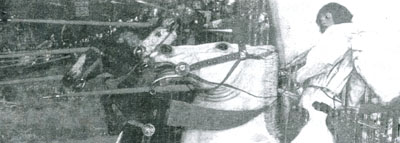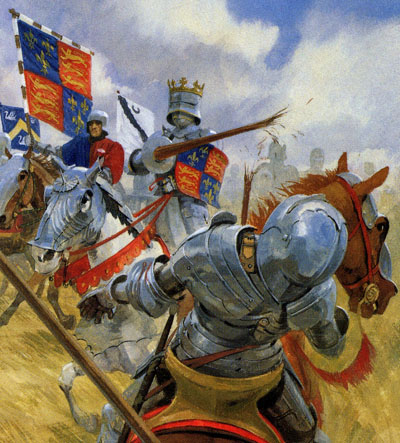The Lance and Longbow Society
The world's premier medieval interest society
The world's premier medieval interest society.
The Legend of �White Surrey�
By Peter Watson
�Saddle White Surrey for the field tomorrow; Look that my staves be sound, and not too heavy.� � William Shakespeare, King Richard III, Act V, Scene III
In legend and literature, heroic figures have often been portrayed riding powerful and beautiful white horses. They have a special place in mythology, being associated with purity, and often with royalty. There is a strong and longstanding tradition, that the tragic and much maligned King Richard III rode such a horse: �White Surrey�, in the magnificent but doomed cavalry charge against the forces of Henry Tudor at Bosworth field, famously recorded by Shakespeare. Richard�s charger in this �swan-song of medieval English chivalry� has been quoted in works by so many authors, that its presence is often accepted as historical fact.
But what is the actual evidence for this famous war-horse? In all the known contemporary sources for Bosworth, there is precisely none, with no existing account recording any such mention. Furthermore the surviving royal household accounts of the time contain no mention of any horse with this name, in their copious listings of stock held by the king throughout the realm.

The earliest reference linking King Richard to such a horse is from the work of Edward Hall, writing his popular history of the dynastic struggles between the rival houses of York and Lancaster, over half a century after Bosworth. He states that before the battle, when Richard enters Leicester, he is mounted on �a great white courser� but there is no mention of his name.

So, when does �White Surrey� first gallop into history? From current evidence this is most likely to be from the pen of William Shakespeare, writing his tragedy of the last Yorkist king in the 1590s. The Bard is known to have used Hall extensively in his so called �history plays� and may well have found the mention of the white horse there, subsequently inventing a romantic name for it. Hall as a writer was certainly a good storyteller and it is possible he simply invented a white horse to embellish his tale. There is however no particular dramatic reason for him to do this in this part of his work, and the mention of �a great white courser� does sound like an eye-witness description. There is a chance that such a horse with the name �White Surrey�, could have stayed in popular folk-memory until Shakespeare�s time, achieving fame and immortality in his writing. We will probably never know.

